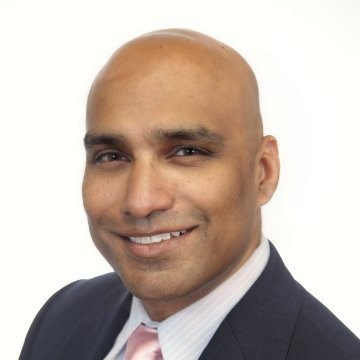Jun 3
2019
Creating a Digital Framework for 21st Century Patient Engagement and Care Coordination
By George Mathew, MD, chief medical officer, North America, DXC Technology.

Patients, like all consumers, are more digitally aware and connected than ever before, as they continue to embrace the latest mobile devices and wearables. These devices, as well as the increasing availability of information on health management, have made patients more engaged participants in managing their own health and wellness.
As a result, they demand timely access to their own health information and expect care services that are personalized and convenient. They also want to use consumer-friendly digital tools to engage with their clinical records, lab results, medications and treatment plans.
However, many health organizations are still evolving their approach to meet this challenge. Existing systems of record in healthcare are often siloed, making it difficult to share actionable patient information across the continuum to accelerate service delivery and improve outcomes. The solution lies in implementing next-generation digital health platforms to integrate sources of historical clinical and wellness data to derive insights that drive more engaging patient experiences, better outcomes and lower costs.
Bridging the Information Gap
Integrating data sources across healthcare segments and aggregating them into a single digital-patient record, empowers patients and providers to make better healthcare choices and improve quality of care.
Rather than searching and clicking across multiple systems, an integrated digital patient-care platform creates a “single source of truth” to give patients and their providers quick and easy access to real-time, context-specific information for timely decisions. Benefits include the following:
- Providers can optimize clinical operations, with results that include streamlined processes, reduced patient admissions, shorter hospital stays and, ultimately, improved quality of care for patients.
- Patients may obtain a full view of their complete health journey and access relevant education and medication information — instead of having to wait for follow-up visits to see and discuss their results.
Patient engagement can also be improved through secure patient messaging capability, the ability for providers to receive patient experience feedback, and deployment of intelligent virtual assistants across a range of mobile devices to create a connected healthcare experience.
Additionally, when healthcare staff have access to the most up-to-date data, they can ensure the right materials are in the right place, reducing material waste and minimizing patient wait times. Furthermore, integrating clinical and wellness systems can help providers efficiently collect population health data to maximize health outcomes through early interventions.
Building a Digital Bridge
These capabilities can be delivered by implementing a core digital platform that enables cross-organizational data sharing and cloud-native technologies such as internet of things (IoT) and artificial intelligence (AI), while ensuring protection of personal data.
Healthcare organizations should also consider solutions that:
- Provide next-generation interoperability and analytics that can integrate care services from multiple organizations, while facilitating easy access and analysis of business intelligence and patient data
- Adopt a cloud-first approach to facilitate access to data, rapid deployment of services across the continuum of patient care, and flexibility to process data as needed for personalized medicine
- Automate manual processes, workflows and billing management integration to support changing business models and customer expectations
- Allow for intelligent use of data analytics to protect privacy and improve the quality and effectiveness of services
- Connect, manage and capture machine-generated data from a variety of sensors and health devices
- Enable patient data quality to be obtained through proper consent and verified, with built-in cybersecurity measures
- Support strong data encryption procedures and data preservation policies to enable healthcare compliance
In Summary
As 21st century patient care evolves, health organizations will continue being challenged to create engaging patient experiences and enable rapid, actionable insights about individuals at the point of care. These collected insights will also positively impact population health practices. The next step for healthcare organizations is to bring together all the pieces of the digital healthcare ecosystem to move the industry forward. Creating a “single patient view” will lead to innovation and better outcomes for all.
Living in the digital age, what type of healthcare problems might these innovations present? I see many negative connotations on 5G, which makes me less confident about three and four g. These are the technologies we rely on for convenience. Are any of these negatively affecting our health?